Podcast
Video:
The post Gita key verse course 23 Can we be spiritual and rational – How can science and spirituality go together – Gita 07.07 appeared first on The Spiritual Scientist.
Websites from the ISKCON Universe
Podcast
Video:
The post Gita key verse course 23 Can we be spiritual and rational – How can science and spirituality go together – Gita 07.07 appeared first on The Spiritual Scientist.
The post The Mon’s Podcast (19) appeared first on The Spiritual Scientist.
 “These regulative principles should act as servants of the basic principle — that is, one should always remember Krishna and never forget Him. This is possible when one chants the Hare Krishna mantra. Therefore one must strictly chant the Hare Krishna maha-mantra twenty-four hours daily. One may have other duties to perform under the direction of the spiritual master, but he must first abide by the spiritual master’s order to chant a certain number of rounds. In our Krishna consciousness movement, we have recommended that the neophyte chant at least sixteen rounds. This chanting of sixteen rounds is absolutely necessary if one wants to remember Krishna and not forget Him. Of all the regulative principles, the spiritual master’s order to chant at least sixteen rounds is most essential.” Sri Caitanya-caritamrta Madhya-lila 22. 133 purport.
“These regulative principles should act as servants of the basic principle — that is, one should always remember Krishna and never forget Him. This is possible when one chants the Hare Krishna mantra. Therefore one must strictly chant the Hare Krishna maha-mantra twenty-four hours daily. One may have other duties to perform under the direction of the spiritual master, but he must first abide by the spiritual master’s order to chant a certain number of rounds. In our Krishna consciousness movement, we have recommended that the neophyte chant at least sixteen rounds. This chanting of sixteen rounds is absolutely necessary if one wants to remember Krishna and not forget Him. Of all the regulative principles, the spiritual master’s order to chant at least sixteen rounds is most essential.” Sri Caitanya-caritamrta Madhya-lila 22. 133 purport.
 For Sripada Tamal Krishna Goswami’s Vyasa-puja today, I wrote a small offering:
For Sripada Tamal Krishna Goswami’s Vyasa-puja today, I wrote a small offering:
Tamal Krishna Goswami has done so much service for Srila Prabhupada—I could speak for hours about it—and I know that Prabhupada is pleased and proud of him. Tamal Krishna Goswami has helped me personally in so many ways as well. I could speak for hours about that too. But today I wish to discuss his amazing, powerful effect on a devotee who never met him—Madana-mohana-mohini dasi. He manifested himself to her in such a potent and personal way that she has become mad after him. And he has empowered her to serve him in manifold ways. She has done much to preserve his legacy and expand his glories. But one of the things that has impressed me most is how she acted, especially while she was in Dallas, to reach out to Gurudeva’s disciples and encourage them in their relationships with him—and with each other. She seemed inspired and empowered by Gurudeva to speak to each one in just the right way, and to encourage and engage them in the most appropriate way in Gurudeva’s service, in Krishna consciousness.
From her example, we can learn some significant lessons in relation to Srila Gurudeva: He is always present; he can manifest himself powerfully and personally to anyone, even someone who never met him; he can show his kindness, compassion, and care to anyone at any time; and he can empower anyone is his service in wonderful ways. So we should have full faith in him—in his presence, in his potency, and in his personal care.
I feel separation from Srila Gurudeva—I miss him dearly—but I take solace and find shelter in the association of those who love and serve him, including those who, in this life, never met him.
Thank you very much.
Hare Krishna.
Your aspiring servant,
Giriraj Swami
Answer Podcast
Download by “right-click and save content”
Transcription :
Transcription: Suresh Gupta
Editing: Sharan Shetty
bQuestion: How do we give up bad habits?
Answer: There are two aspects about changing habits – (i) rejection (ii) replacement.
Rejection of a habit is usually difficult whereas replacement is much easier. In general, the process of bhakti, focuses, not so much on rejection but on replacement. Some spiritualists reject things by focus on what they will not do. Srimad Bhagavatam (4.22.39) mentions that the jnanis and yogis try to stop the waves of sense gratification but cannot do so as it is very difficult for them.
When we try not think about something, it only increases our craving to do it. Therefore, we need some positive focus. We replace the negative habits with positive ones. Rather than rejecting bad habits we focus more on cultivating positive habits by (i) externally filling our schedule with positive activities (ii) internally filling the mind with positive thoughts. By doing so the old habits will fall away. However, this is a gradual process.
While doing this, we need to be patient. There is no instant cure for habits. We can create two kinds of supports for ourselves: (i) pushers towards the positive (ii) blockers from the negative.
“Pushers towards the positive” means that we should have a circle of friends, where we push each other towards the positive habits e.g. association of devotees, reading scriptures, mantra meditation etc. Along with pushers, we also need “blockers from negative”, which will block any opportunity for indulging in those habits which we want to break. For example, if somebody is addicted to alcohol, he should avoid mixing with the alcoholics. If someone has the habit of surfing wrong websites, then one can add filters or turn on firewalls.
Therefore, by filling our life with positive activities and by creating some pushers towards the positive and blockers from the negative, we will find it easier to replace the bad habits with good ones.
End of transcription.
The post How do we give up bad habits? appeared first on The Spiritual Scientist.
[School of Bhakti – Easter Online Retreat Day 2]
Podcast
The post Learning prayerfulness based on Bhagavatam prayers appeared first on The Spiritual Scientist.
Although we struggled with technical difficulties during our first TOVP TALKS webinar and were unable to broadcast the live feed onto the TOVP Facebook Page, the program with Ambarisa prabhu went very well with almost 300 devotees on the Zoom platform.
We would like to take this opportunity to invite you to join us for our second webinar with His Holiness Bhakti Charu Maharaja speaking about Srila Prabhupada’s role in ISKCON now and into the future. Below are the time details and direct ZOOM registration link.
Zoom Registration Information :
TOVP TALKS Webinar #2 – June 20
7:30pm IST/10:00am US EST
His Holiness Bhakti Charu Maharaja
Srila Prabhupada – Now and into the Future
ZOOM Registration: https://m.tovp.org/bhakticharu
Program Description
The question is sometimes asked what the role of ISKCON’s Founder/Acharya, His Divine Grace A.C. Bhaktivedanta Swami Prabhupada, is in the current and future social, spiritual and philosophical culture of the movement he started. How should disciples of ISKCON’s gurus for the generations to come understand his position and practically apply his teachings? How should they relate to him personally and understand his influence on their lives without his physical presence? How should his teachings, practical instructions and management systems guide ISKCON into the future. All these and other questions will be discussed in this thought-provoking interview with ISKCON Guru, GBC, author and senior disciple of Srila Prabhupada, His Holiness Bhakti Charu Maharaja.
The post TOVP TALKS Webinar #2 – H.H. Bhakti Charu Maharaja Srila Prabhupada’s Role – Now and into the Future June 20 appeared first on Temple of the Vedic Planetarium.
 Giriraj Swami read and spoke from Srimad-Bhagavatam 2.1.16.
Giriraj Swami read and spoke from Srimad-Bhagavatam 2.1.16.
etevan sankhya-yogabhyam
sva-dharma-parinisthaya
janma-labhah parah pumsam
ante narayana-smrtih
Translation
The highest perfection of human life, achieved either by complete knowledge of matter and spirit, by practice of mystic powers, or by perfect discharge of occupational duty, is to remember the Personality of Godhead at the end of life.
Remember Krishna at the End of Life (Right click to download)
 Giriraj Swami read and spoke from Srimad-Bhagavtam 1.8.25.
Giriraj Swami read and spoke from Srimad-Bhagavtam 1.8.25.
“Generally the distressed, the needy, the intelligent and the inquisitive, who have performed some pious activities, worship or begin to worship the Lord. Others, who are thriving on misdeeds only, regardless of status, cannot approach the Supreme due to being misled by the illusory energy. Therefore, for a pious person, if there is some calamity there is no other alternative than to take shelter of the lotus feet of the Lord. Constantly remembering the lotus feet of the Lord means preparing for liberation from birth and death. Therefore, even though there are so-called calamities, they are welcome because they give us an opportunity to remember the Lord, which means liberation.” Srimad-Bhagavtam 1.8.25 purport.
Srimad-Bhagavtam 1.8.25 (Right click to download)
 Education is the cornerstone of a society's flourishment. It changes one's attitude and consequently the quality of one's life. There are several life skills to master and no shortage of courses or self-help books that one can read to develop one's personality, then why do we still struggle? What is the Vedic perspective on this? It is all there in the scriptures from many a millennia ago, how do we use this and translate it in our personal situations?
Education is the cornerstone of a society's flourishment. It changes one's attitude and consequently the quality of one's life. There are several life skills to master and no shortage of courses or self-help books that one can read to develop one's personality, then why do we still struggle? What is the Vedic perspective on this? It is all there in the scriptures from many a millennia ago, how do we use this and translate it in our personal situations?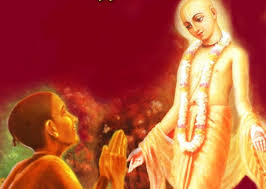

khola-becataya khyatah panditah shridharo dvijah
asid vraje hasya-karo yo namna kusumasavah
(Gaura-ganoddesha-dipika 133)
One of the twelve Gopals in Krishna lila was named Kusumasava. He appeared in Gaura-lila as Sridhara Pandit, who was given the nickname khola-beca, “bark-seller.”
Sridhara Pandit was a resident of Nabadwip. Nabadwip is composed of nine islands, of which the central island is known as Antardvipa. He used to live at the northern extremity of Mayapur and to the southeast of the Chand Kazi’s samadhi, in the place that now goes by the name of Sridhara Angan.
During his lifetime, it was a banana orchard, which nowadays is no longer the case, at least not to our mortal eyes. During this incarnation, Sridhara played the role of a poor Brahmin who made his living selling the produce of his banana garden.
In order to keep the memory of Sridhara Pandit alive, Srila Bhaktisiddhanta Saraswati Goswami Prabhupada, discovered and revealed this site of Chaitanya Mahaprabhu’s pastimes. Deity worship was established there and it continued until after Srila Bhaktisiddhanta Saraswati Goswami Thakur’s disappearance.
Srila Bhaktivinoda Thakur has written as follows in his Nabadvipa-dhama-mahatmya: “Sridhara Pandit’s home comes after the weavers’ neighborhood. Gauranga Mahaprabhu ended the kirtan there.” Nityananda Prabhu says the following to Jiva Goswami:
“Out of his mercy, Mahaprabhu Gauranga Hari would end the kirtan here so that the devotees could rest. It is therefore known as vishrama-sthana, or the Lord’s place of rest. So let us also repose a while here at the house of Sridhara Pandit.”
(Nabadwip-dhama-mahatmya)
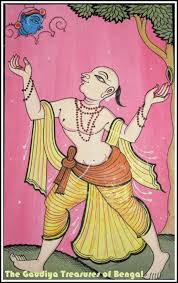
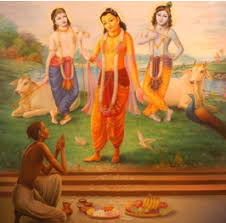

(Kadamba Kanana Swami, 6 December 2019, Cape Town, South Africa, Srimad Bhagavatam 2.7.20)
The higher planetary systems have heavenly planets where one can enjoy, but above these celestial planets are planets of sages – the Maharloka and the Tapaloka, and ultimately the Brahmaloka. So, the Maharloka is the residence of the manus according to the Brhad-Bhagavatamrta. So the manus are basically prajapatis – they are forefathers of mankind. In the beginning, the universe is empty and only Brahma is there within the universe. Then from the mind of Brahma, various sages manifest and finally some of these personalities are to become prajapatis or those who generate praja. Praja means living beings, and so gradually the universe becomes populated. Not all prajapatis are manus but some of them are. So these manus are establishing the religious principles for the universe and up to 1959 in India, the Manu Samhita was the law book for society. It is interesting how it survived that long, even twelve years after the partition. Still, the Manu Samhita was followed and it had been followed for thousands of years. So during British rule in India, there was the British law applying for the British and then Manu Samhita applying for the Indian population. It was very interesting how they kept that intact and separate. And only in 1959 did India adopt British law, 12 years after the British left. The Manu Samhita has given so many instructions for civilised human beings.
However, the Manu Samhita, although it gives injunctions for how human society should behave, it is not completely transcendental and therefore Vaishnavas do not fully accept the Manu Samhita. For example, there is regulated meat-eating in the Manu Samhita that we will never accept. The Manu Samhita is simply mundane instruction on how to regulate society, but pure transcendental instructions are of another nature that is found in Srimad Bhagavatam. Therefore, Srimad Bhagavatam is the literature that one can accept one hundred percent. So, there are many Vedic literatures and there is a hierarchy within Vedic literatures and even if there are verses quoted from particular Vedic literatures, that does not make the entire book necessarily authorized.
There are many books from Manu Samhita, and also many books that our acaryas will quote from, because it is an authorised Vedic source, but that does not mean that we accept the whole Manu Samhita. So in this way we rely on acaryas – dharmasya tattvaṁ nihitaṁ guhāyāṁ (Caitanya Caritamrta, Madhya-lila, 17.186). The true purport of scriptures remains hidden in the hearts of great saintly personalities and it is only through their revelation that one can approach scripture. Therefore the guru principle is essential.
evaṁ paramparā-prāptam
imaṁ rājarṣayo viduḥ
sa kāleneha mahatā
yogo naṣṭaḥ paran-tapa.
This transcendental knowledge is coming through a line of spiritual masters who take this transcendental knowledge, based on scriptures, realise this transcendental knowledge and then teach it. And they are carrying forward the proper conclusions from scriptures (Bhagavad-gita 4.2). If one tries to ascertain what is true, simply by studying books alone, one will get lost in the wilderness. We require the acaryas to establish what actually is to be accepted and what is not to be accepted. That is the nature of transcendental culture.
The article " The nature of this transcendental culture " was published on KKSBlog.
“The full potential of the Holy Name is there when we share the Holy Name with others.”
Podcast
Video:
The post The Monks Podcast 19 – Capitalism Communism and Spirituality – part 2 appeared first on The Spiritual Scientist.
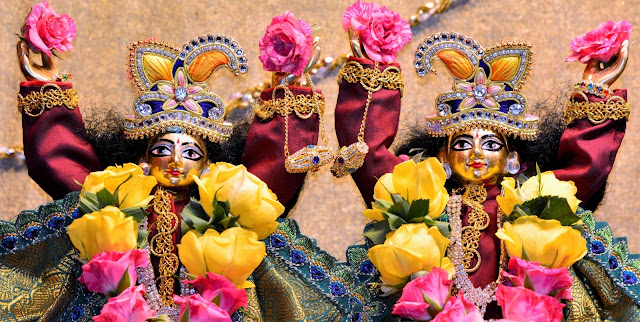
ISKCON Brampton Center continue to remain closed till further notice. Please visit us on Facebook Page for Live program as per below: | |||||||
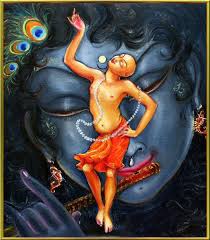
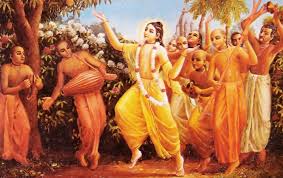
Sri Mukunda Datta was born in the Cattagrama district, in the village of Chanhara, which is under the jurisdiction of the police station named Patiya. This village is situated ten krosas, or about twenty miles, from the home of Pundarika Vidyanidhi.
In the Gaura-ganoddesa-dipika (140) it is said:vraje sthitau gayakau yaumadhukantha-madhuvrataumukunda-vasudevau taudattau gauranga-gayakau “In Vraja there were two very nice singers named Madhukantha and Madhuvrata. They appeared in caitanya-lila as Mukunda and Vasudeva Datta, who were singers in the society of Lord Caitanya Mahaprabhu.”
When Lord Caitanya was a student, Mukunda Datta was His class friend, and they frequently engaged in logical arguments. Sometimes Lord Caitanya Mahaprabhu would fight with Mukunda Datta, using tricks of logic. This is described in the Caitanya-bhagavata, Adi-lila, Chapters Eleven and Twelve.
When Lord Caitanya Mahaprabhu returned from Gaya, Mukunda Datta gave Him pleasure by reciting verses from Srimad-Bhagavatam about Krishna-lila. It was by his endeavor that Gadadhara Pandita Gosvami became a disciple of Pundarika Vidyanidhi, as stated in Sri Caitanya-bhagavata, Madhya-lila, Chapter Seven.
When Mukunda Datta sang in the courtyard of Srivasa Prabhu, Mahaprabhu danced with His singing, and when Lord Caitanya for twenty-one hours exhibited an ecstatic manifestation known as sata-prahariya, Mukunda Datta inaugurated the function by singing.
Podcast
Video:
The post The Monk’s Podcast 18 -Social Justice and Spiritual wisdom appeared first on The Spiritual Scientist.
Before the world began grappling with the Coronavirus pandemic, many of us yearned for some respite from our hectic corporate schedules. Although the pandemic and the subsequent lockdown did bring us the much needed respite, most of us had begun to become tormented by another evil: boredom. Some took to the kitchen, some took to […]
The post Renounce or Redirect? A Lesson from the Pandemic appeared first on ISKCON News.
“A riot is the language of the unheard” (Dr. Martin Luther King Jr) Within the pandemic of coronavirus, a pandemic of hatred is taking an equally toxic toll. We need a pandemic of healing, a pandemic of change of heart, a pandemic systemic change in our collective consciousness. Over so many centuries, immigrants came […]
The post A Pandemic of COVID, A Pandemic of Hatred appeared first on ISKCON News.
The ISKCON Harinam Sankirtan Ministry was appointed this year by the GBC. The minister is Lokanath Swami. In one of its first initiatives, the Ministry began Kirtan Fest Global, a global brand to promote Kirtan Festivals throughout the world. What better place to start than Mother India? Kirtan Fest Global organized the Kirtan Fest India […]
The post Kirtan Fest Global Conducts Kirtan Fest India and Bangladesh Online appeared first on ISKCON News.
Prajapati Dasa, a disciple of A.C. Bhaktivedanta Swami Prabhupada has lived at the ISKCON Dallas, Texas, USA, temple for more than two decades. During this time he established very loving relationships with college professors, often giving tours to groups of students with a baritone voice and animated expressions. Everyone relished his theatric like performances. He would also head […]
The post Prajapati Dasa Passes Away appeared first on ISKCON News.
The International Society for Krishna Consciousness (ISKCON) wishes to lend our voice to the outcry of millions of people across the United States and around the world, who are calling for justice for abused minorities and protection for all people. The recent murder of George Floyd was a terrible crime. We pray to God, […]
The post Reviving Hope Amidst a Culture of Violence – A Statement by ISKCON on ‘Black Lives Matter’ appeared first on ISKCON News.
I’m getting old. I admit it – the hair is disappearing, the back is failing and the glasses are coming. Materially speaking, it’s a downhill story. Spiritually, however, the passing of time should deliver a range of invaluable gifts – more maturity, more experience, more knowledge and more opportunities to serve. Maybe, but in […]
The post The Inner Child appeared first on ISKCON News.
A video by Ananta Vrindavan.
The post USA Kirtan – Sadhu Sanga 2016 with Indradyumna Swami appeared first on ISKCON News.